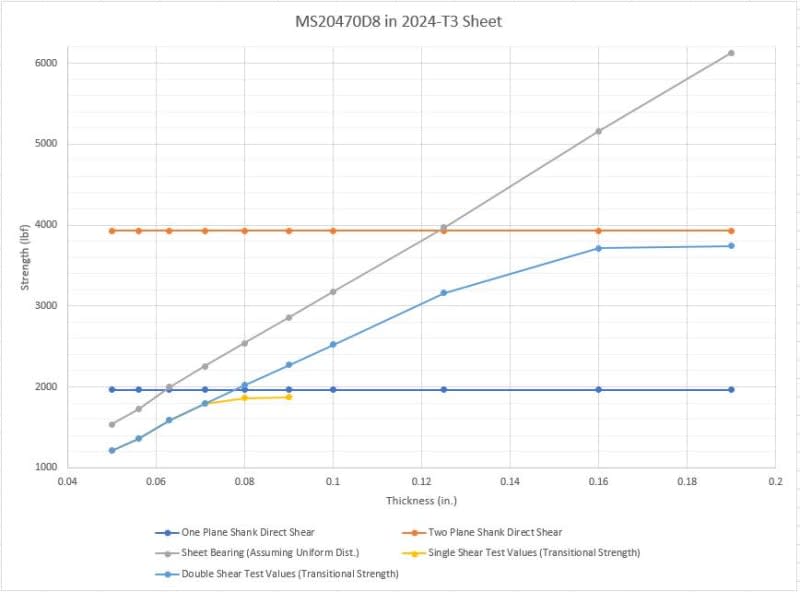OK some things need clarification.
NASM5674 26-KSI shear strength requirement is for UNDRIVEN shank in steel dies... spec use only. 'Driving' the 2117-T4 solid rivet actually induces compression cold-working of the shank as it crushes/swells to fill the [slightly larger] hole [and form the 'bucked-tail'].
MMPDS/MIL-HDBK-5 driven shear strength values are based on testing... with control test parameters for defined grip-length [affects swelling] and specific hole diameters... installed using 'good-practice hand-driven' [bucked] techniques. This sets a statistical baseline for very +99% confidence of all rivets meeting/exceeding the value listed [~30-KSI]. For materials these allowables would be considered 'A' basis... where strength is lowered for statistical safety purposes.
HOWEVER... your statement is a sketchy in many regards. 'Special cases' are excluded from consideration... unless the appropriate [proprietary] testing has been accomplished and is approved by whatever agency. Where strength is increased with 'special controls' for wire-alloy, dimensional processing, finishes, installation practices... usually at premium cost for satisfactory statistical safety purposes... this would be considered/classified as 'B' basis... premium quality.
NOTE1. OH yeah... and as mentioned by others... the MIL/MMPDS values were 'derived/codified' decades ago.
NOTE2. The apparent FSu values You cited for test rivet installs... 33-to-34-KSI... should actually be compared to 30-KSI... sooooo...
33/30=1.100
34/30=1.133
... not as dramatic as you stated.
NOTE3. Machine installation [drill-insert-squeeze, repeat]... of conventional rivets MS20470, MS20426, NAS1097, etc] could provide increased shear strength allowables due to high repeatability/consistency/confidence. And yep... there are other unique practices for flush rivets not discussed here.
NOTE4. OK, aluminum alloys and fabrication processes [heading/forming/heat-treatment/etc] have been improved over the decades... so... I suspect that MIL/MMPDS shear strength tables could stand changes... especially for some of the newer solid rivets [NAS9313, NAS9314, NAS1241-OS, NAS1242-OS, etc]. Please send bags-of-$$$ for testing
CAUTION1. I had recent bad-experience with production mechanics creating a 'new way' to drive solid [D] rivets for high volume production... that created consistent bad installs that were never corrected 'on-the-spot'. And no-one in engineering was ever consulted for advice RE this 'practice'. Then the shit-hit-the-fan. After MAJOR gnashing-of-teeth and soul searching... there was a safety inspection requirement and mandated replacement of hundreds-of-thousands of rivets, due to 'no confidence' in the installations... way-out-of-spec... what a nightmare.
I hope this makes sense.
Regards, Wil Taylor
o Trust - But Verify!
o For those who believe, no proof is required; for those who cannot believe, no proof is possible. [variation, Stuart Chase]
o Unfortunately, in science what You 'believe' is irrelevant. ["Orion", HBA forum]
o Only fools and charlatans know everything and understand everything." -Anton Chekhov
![[smile] [smile] [smile]](/data/assets/smilies/smile.gif)
![[smile] [smile] [smile]](/data/assets/smilies/smile.gif)

![[thumbsup2] [thumbsup2] [thumbsup2]](/data/assets/smilies/thumbsup2.gif)
![[bigsmile] [bigsmile] [bigsmile]](/data/assets/smilies/bigsmile.gif)
